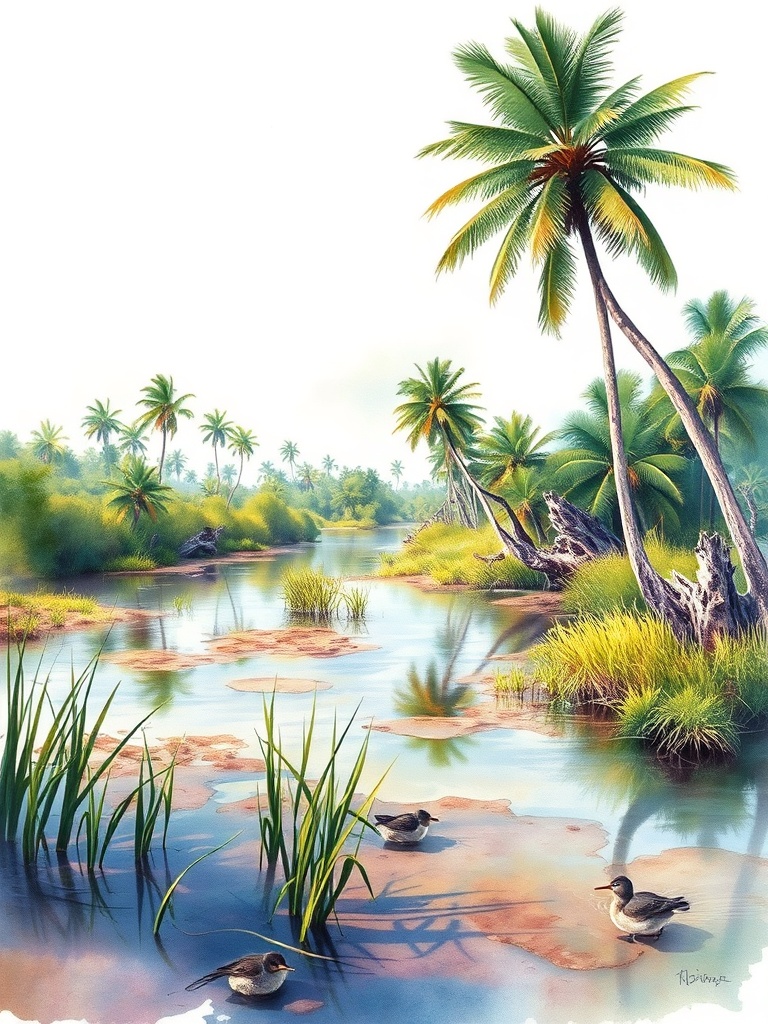Everglades: Protecting the “River of Grass” and Its Wildlife
The Everglades is a globally unique subtropical wetland that functions more like a slow-moving river than a conventional marsh.
Freshwater moves gently south from the Kissimmee Basin through sawgrass marshes, tree islands, and mangrove-lined estuaries before reaching Florida Bay. This mosaic of habitats supports iconic wildlife — American alligators, Florida panthers, West Indian manatees, and hundreds of bird species — and provides crucial ecosystem services, including water filtration, storm buffering, and carbon storage.
Current challenges and restoration efforts
Hydrology is at the heart of the Everglades’ health. Decades of altered water flow from canals, levees, and draining for agriculture and development disrupted seasonal sheetflow, shrinking wildlife habitat and changing salinity patterns in coastal estuaries. That altered hydrology, combined with nutrient pollution from agricultural runoff, has caused harmful algal blooms and shifts in species composition across the landscape.
Restoration is a large-scale, ongoing effort that aims to restore more natural water flows and improve water quality across the system.
Major strategies include land acquisition to reconnect fragmented wetlands, construction of water storage and treatment facilities that capture and clean freshwater before it reaches sensitive estuaries, and reworking or removing infrastructure that blocks historic sheetflow.
Managers also use prescribed fire and native-vegetation restoration to maintain healthy marshes and tree islands.
Invasive species and wildlife impacts
Invasive plants such as melaleuca and Old World climbing fern aggressively outcompete native vegetation, while invasive animals like the Burmese python have had dramatic impacts on mammal and bird populations in parts of the system. Coordinated detection, removal, and research programs aim to limit the spread of invasives and understand their ecological consequences. Recovery of wading bird populations and the ongoing conservation of rare species like the Florida panther depend on continued progress in restoring hydrology and reducing human-caused pressures.
Climate threats and coastal resilience
Sea level rise and changing precipitation patterns add urgency to Everglades protection.
Saltwater intrusion threatens freshwater wetlands and groundwater resources, altering habitat for fish, birds, and plants. Building coastal resilience involves restoring freshwater flow to dilute saline water, conserving and restoring mangroves and seagrass beds that buffer storm surge, and incorporating adaptive management into restoration planning.
Visiting and supporting the Everglades
Responsible tourism supports conservation and local economies. Popular low-impact activities include guided canoe or kayak trips through the Shark River Slough, birdwatching from boardwalks, and visiting the park’s visitor centers to learn about ecology and restoration. When visiting:
– Stay on designated trails and boardwalks.
– Never feed or approach wildlife.
– Clean and inspect boats, gear, and pets to avoid moving invasive species.
– Choose licensed guides and eco-friendly operators.
How people can help
– Reduce fertilizer use and plant native species to limit nutrient runoff.
– Volunteer with local conservation groups for habitat restoration or invasive species removal.
– Report sightings of invasive wildlife to local wildlife authorities.
– Support policies and funding that prioritize natural water flows and long-term restoration.

The Everglades’ future depends on sustained science-based restoration, community engagement, and adaptive strategies to meet changing climate and land-use pressures. Protecting this “River of Grass” preserves not only a rich array of wildlife but also the water security and coastal defenses that benefit millions of people.